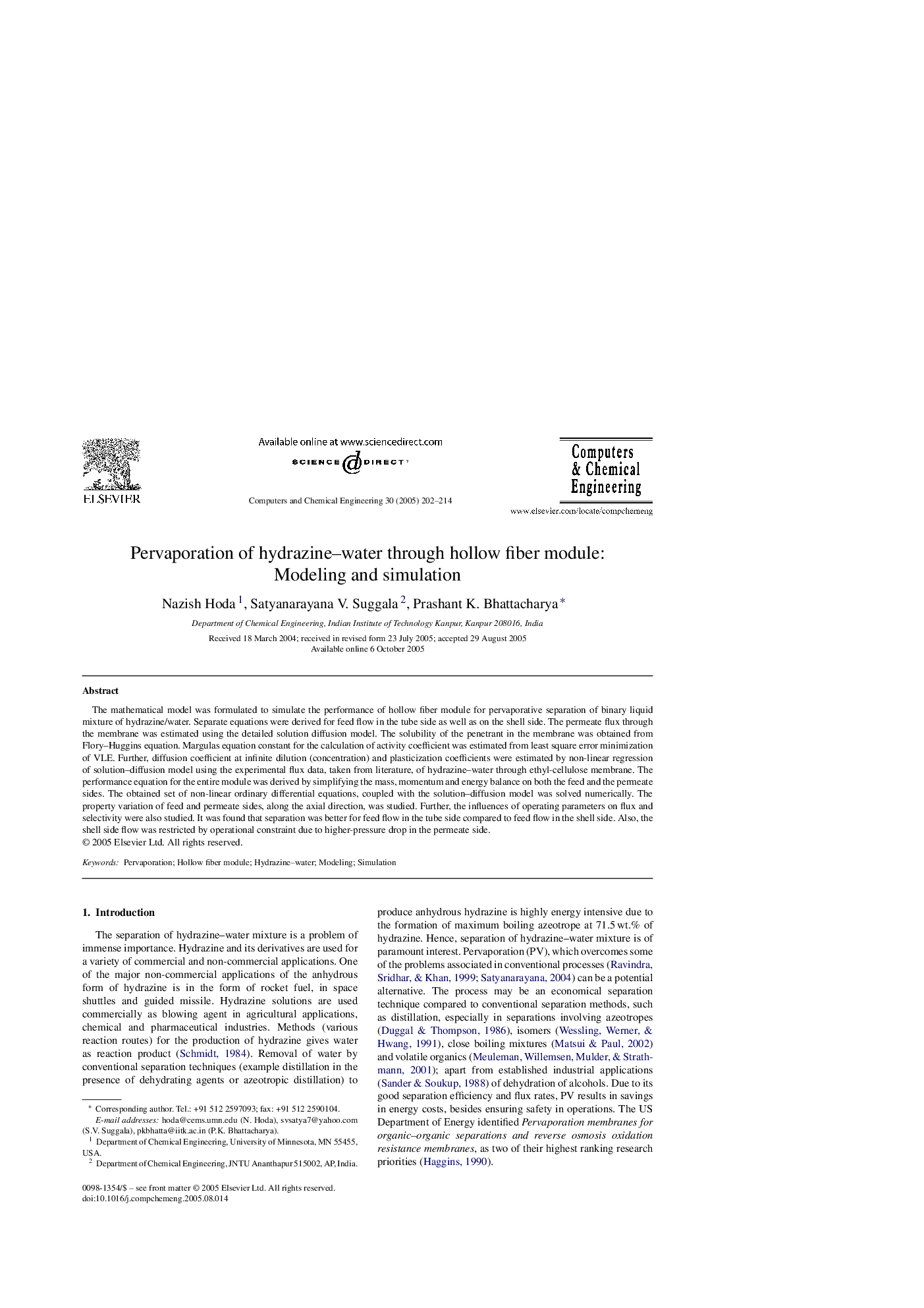| Article ID | Journal | Published Year | Pages | File Type |
|---|---|---|---|---|
| 10265664 | Computers & Chemical Engineering | 2005 | 13 Pages |
Abstract
The mathematical model was formulated to simulate the performance of hollow fiber module for pervaporative separation of binary liquid mixture of hydrazine/water. Separate equations were derived for feed flow in the tube side as well as on the shell side. The permeate flux through the membrane was estimated using the detailed solution diffusion model. The solubility of the penetrant in the membrane was obtained from Flory-Huggins equation. Margulas equation constant for the calculation of activity coefficient was estimated from least square error minimization of VLE. Further, diffusion coefficient at infinite dilution (concentration) and plasticization coefficients were estimated by non-linear regression of solution-diffusion model using the experimental flux data, taken from literature, of hydrazine-water through ethyl-cellulose membrane. The performance equation for the entire module was derived by simplifying the mass, momentum and energy balance on both the feed and the permeate sides. The obtained set of non-linear ordinary differential equations, coupled with the solution-diffusion model was solved numerically. The property variation of feed and permeate sides, along the axial direction, was studied. Further, the influences of operating parameters on flux and selectivity were also studied. It was found that separation was better for feed flow in the tube side compared to feed flow in the shell side. Also, the shell side flow was restricted by operational constraint due to higher-pressure drop in the permeate side.
Related Topics
Physical Sciences and Engineering
Chemical Engineering
Chemical Engineering (General)
Authors
Nazish Hoda, Satyanarayana V. Suggala, Prashant K. Bhattacharya,
